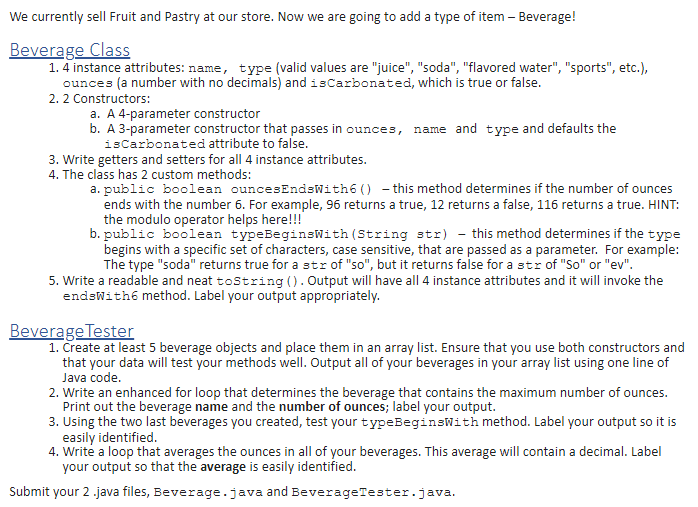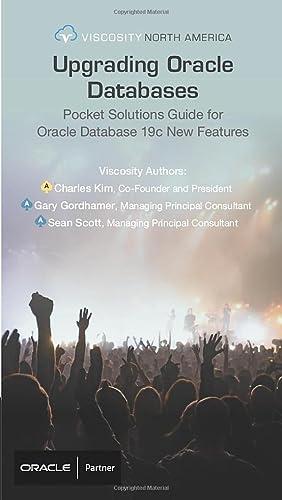Question
Beverage Class 4 instance attributes: name, type (valid values are juice, soda, flavored water, sports, etc.), ounces (a number with no decimals) and isCarbonated, which
Beverage Class
4 instance attributes: name, type (valid values are "juice", "soda", "flavored water", "sports", etc.), ounces (a number with no decimals) and isCarbonated, which is true or false.
2 Constructors:
A 4-parameter constructor
A 3-parameter constructor that passes in ounces, name and type and defaults the isCarbonated attribute to false.
Write getters and setters for all 4 instance attributes.
The class has 2 custom methods:
public boolean ouncesEndsWith6() this method determines if the number of ounces ends with the number 6. For example, 96 returns a true, 12 returns a false, 116 returns a true. HINT: the modulo operator helps here!!!
public boolean typeBeginsWith(String str) this method determines if the type begins with a specific set of characters, case sensitive, that are passed as a parameter. For example: The type "soda" returns true for a str of "so", but it returns false for a str of "So" or "ev".
Write a readable and neat toString(). Output will have all 4 instance attributes and it will invoke the endsWith6 method. Label your output appropriately.
BeverageTester
Create at least 5 beverage objects and place them in an array list. Ensure that you use both constructors and that your data will test your methods well. Output all of your beverages in your array list using one line of Java code.
Write an enhanced for loop that determines the beverage that contains the maximum number of ounces. Print out the beverage name and the number of ounces; label your output.
Using the two last beverages you created, test your typeBeginsWith method. Label your output so it is easily identified.
Write a loop that averages the ounces in all of your beverages. This average will contain a decimal. Label your output so that the average is easily identified.

Step by Step Solution
There are 3 Steps involved in it
Step: 1

Get Instant Access to Expert-Tailored Solutions
See step-by-step solutions with expert insights and AI powered tools for academic success
Step: 2

Step: 3

Ace Your Homework with AI
Get the answers you need in no time with our AI-driven, step-by-step assistance
Get Started


